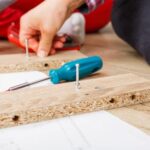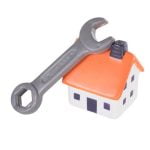Homeowners Associations (HOAs) play a crucial role in property management, ensuring that neighborhoods and communities are well-maintained and aesthetically pleasing. However, homeowners often find themselves questioning the boundaries of HOA control, particularly when it comes to making improvements to their own homes without their permission. This article will delve into the intricacies of HOA power and shed light on whether or not they can make alterations to your property without your consent.
When you purchase a home in a neighborhood or community governed by an HOA, you become part of a collective body responsible for maintaining the overall appearance and functionality of the area. While this can offer benefits such as shared amenities and a sense of community, it also means adhering to certain rules and regulations set forth by the HOA.
Understanding the scope of an HOA’s power is essential in order to navigate any potential concerns as a homeowner. In some cases, an HOA may have discretionary authority to make modifications or improvements to individual properties without seeking explicit permission from homeowners. However, this power is typically limited and subject to various factors that will be explored further in this article.
By unraveling the boundaries of HOA control, assessing governing documents, defining different types of changes – cosmetic versus structural – and understanding the approval process for property alterations, homeowners can better understand their rights. Furthermore, exploring legal safeguards and methods for resolving disputes will be discussed in order to protect homeowners’ rights while still maintaining harmony within the community.
As we delve into each section of this article, it will become apparent how homeowners associations can impact property ownership and what steps homeowners can take to strike a balance between maintaining community standards and preserving their individual property rights. By fostering effective communication with your HOA and neighbors and exploring mediation/ arbitration options when disputes arise over improvements, you can navigate the relationship between homeowners associations and homeowner autonomy with greater clarity and confidence.
Explaining the HOA’s Power
The role and power of a homeowners association (HOA) in property management is often a topic of discussion and debate. Understanding the rights and discretionary authority of an HOA is crucial for homeowners to navigate their relationship with the association. This section will delve into the specifics of the HOA’s power, shedding light on the boundaries of control that an HOA may have over making improvements to your home without your permission.
One of the primary reasons homeowners choose to live in an HOA community is the expectation that certain standards will be upheld by all residents, ensuring a harmonious living environment. To enforce these standards, an HOA has rights and discretionary authority granted through its governing documents, which typically consist of covenants, conditions, and restrictions (CC&Rs) as well as bylaws.
The CC&Rs and bylaws serve as legal agreements between homeowners and the HOA, outlining the rules and regulations that govern community living. It is essential for homeowners to carefully review these documents before purchasing a property within an HOA community. By doing so, you can gain insight into what improvements may be subject to mandatory approval or if there are limits on what changes you can make without seeking permission from the HOA.
Some typical examples of improvements that may fall under an HOA’s purview include structural modifications such as building additions or renovations that affect common areas or shared walls. Additionally, changes that alter community aesthetics like exterior paint colors or landscaping may also require approval. Conversely, cosmetic changes like interior wall colors or window coverings are often considered within homeowner discretion.
It is essential for homeowners to understand their rights when it comes to making improvements on their properties while respecting their obligations within an HOA community. By familiarizing yourself with governing documents, distinguishing between cosmetic and structural changes, understanding regulations and approval processes set forth by the HOA, engaging in effective communication with both your HOA board members and neighbors, and utilizing mediation or arbitration if disputes arise, you can strike a balance between HOA control and property ownership.
Can HOA Make Improvements to Your Home Without Your Permission
Homeowners Associations (HOAs) play a crucial role in property management, and it is important for homeowners to understand their rights and authority. One question that often arises is whether an HOA can make improvements to your home without your permission. This section will delve into the boundaries of HOA control and provide clarity on this issue.
Firstly, it is important to note that an HOA does have certain powers and discretionary authority when it comes to making changes or improvements to a homeowner’s property. These powers are typically outlined in the HOA’s governing documents, such as the Covenants, Conditions, and Restrictions (CC&Rs) and the bylaws. Homeowners should review these documents thoroughly to understand the extent of the HOA’s authority.
The distinction between cosmetic changes and structural changes is also crucial in determining whether an HOA can make improvements without permission. Cosmetic changes generally refer to alterations or modifications that are purely aesthetic in nature and do not affect the structure or integrity of the property. On the other hand, structural changes involve modifications that impact the overall structure or functionality of the home.
| Cosmetic Changes | Structural Changes |
|---|---|
| Repainting walls | Adding an extension or additional rooms |
| Replacing carpet with hardwood flooring | Tearing down load-bearing walls |
| Installing new light fixtures | Reconfiguring plumbing or electrical systems |
While an HOA may have more leeway in making cosmetic changes without permission, structural changes generally require homeowner approval. However, it is important to consult your specific governing documents as they may provide further guidance on this matter.
Assessing Your HOA’s Governing Documents
When it comes to understanding the boundaries of an HOA’s control over your property, it is essential to assess and review your HOA’s governing documents. These documents typically include the Covenants, Conditions, and Restrictions (CC&Rs) and the Bylaws. By familiarizing yourself with these important documents, you can gain a clearer understanding of how the HOA operates and what limitations they have in making improvements to your home without your permission.
One crucial step in assessing your HOA’s governing documents is reviewing the CC&Rs. These are legal documents that outline the rules and regulations governing the community. They often cover a wide range of topics including architectural guidelines, maintenance responsibilities, use restrictions, and more. It is important to carefully read through these CC&Rs to understand any specific provisions that may govern how improvements or alterations are made to individual properties within the community.
Similarly, reviewing the Bylaws is equally important as they outline the internal procedures for how the HOA operates. This includes details on board elections, meetings, voting rights, enforcement measures, and more. By understanding these Bylaws thoroughly, you can gain insight into how decisions regarding improvements or alterations are made within the HOA. This knowledge can help you determine if certain changes require homeowner input or approval or if discretionary authority lies solely with the HOA board.
To assist homeowners in their review process, below is a breakdown of some key points to consider when examining CC&Rs and Bylaws:
- Look for any specific language pertaining to improvements or alterations.
- Identify any provisions outlining homeowner consent or approval requirements.
- Determine if there are provisions allowing for discretionary authority by the HOA.
- Pay attention to any restrictions on cosmetic versus structural changes.
- Take note of any processes or procedures outlined for proposing or approving changes.
By conducting a careful analysis of your HOA’s governing documents, you will be better equipped to understand your rights as a homeowner when it comes to improvements or alterations on your property. This knowledge can also help you navigate any potential disputes or conflicts with the HOA, promoting a harmonious balance between HOA control and property ownership within your community.
Defining “Cosmetic” vs “Structural” Changes
When it comes to making improvements to your home, it is important to understand the distinction between “cosmetic” and “structural” changes. The homeowners association (HOA) has the authority to enforce certain regulations and guidelines regarding property alterations, but the extent to which they can make improvements without your permission depends on the nature of the changes being made.
Cosmetic changes refer to modifications that are purely aesthetic in nature and do not affect the overall structure or integrity of the property. Examples may include painting the exterior of your home, adding decorations or landscaping features, or making interior design updates. In most cases, HOAs have limited restrictions when it comes to cosmetic changes, as these modifications usually have minimal impact on neighboring properties.
On the other hand, structural changes involve alterations that impact the functionality or stability of a building. This can include major renovations such as adding an extension, removing walls, or modifying plumbing systems. HOAs typically impose stricter regulations when it comes to structural changes due to their potential impact on property values and overall community aesthetics. In most cases, structural changes require obtaining approval from the HOA before any work can be done.
It is essential for homeowners to familiarize themselves with their HOA’s governing documents, particularly the covenants, conditions, and restrictions (CC&Rs) as well as the bylaws. These documents outline specific guidelines and limitations imposed by the HOA regarding property improvements. Reviewing these documents will give you a clear understanding of your rights as a homeowner and what types of renovations require prior approval from the HOA.
In summary, differentiating between “cosmetic” and “structural” changes is crucial in understanding what improvements your HOA can make without your permission. By familiarizing yourself with your HOA’s governing documents and adhering to their regulations on property alterations, you can maintain a harmonious relationship with the HOA while exercising your rights as a homeowner.
HOA Regulations and Approval Process
Understanding HOA Regulations
One of the primary roles of a homeowners association (HOA) is to establish and enforce regulations that govern the appearance and maintenance of properties within its jurisdiction. These regulations, often outlined in the Covenants, Conditions, and Restrictions (CC&Rs) and bylaws, help maintain uniformity and ensure that properties uphold certain standards. When it comes to making alterations or improvements to your home, it is crucial to understand the HOA’s regulations surrounding property alterations.
The Approval Process for Property Alterations
Before making any changes or improvements to your home, it is important to consult your HOA’s governing documents to determine what types of alterations require approval. The approval process typically involves submitting an application to the HOA board or architectural committee detailing the proposed changes. The board will then review the application against the established guidelines before granting or denying permission.
It is essential to note that each HOA may have different requirements and processes for obtaining approval. Some may require detailed plans, including architectural drawings or renderings, while others may only require a written description of the proposed alteration. Additionally, there may be specific timelines for submitting applications and receiving a response from the HOA. Familiarize yourself with these requirements beforehand to avoid delay or potential conflicts.
Working With Your HOA
Maintaining open lines of communication with your HOA is crucial throughout the approval process for property alterations. If you have questions about the rules and procedures related to making improvements, reach out to your HOA board or management company for clarification. They can provide guidance on permitted alterations, required documentation, and even offer suggestions for reputable contractors.
In some cases, your neighbors may also play a role in this process as they could be impacted by any changes you make. It is advisable to inform them about planned property alterations beforehand as a courtesy. This can help prevent potential misunderstandings or disputes and foster positive relationships within the community.
By understanding HOA regulations, following the proper approval process, and maintaining effective communication, you can navigate the rules for property alterations successfully. Remember, working collaboratively with your HOA and neighbors helps ensure harmony while preserving your property ownership rights.
Protecting Homeowners’ Rights
As a homeowner, it is important to understand your rights and legal safeguards when it comes to protecting your property freedom from potential HOA improvements without your permission. While HOAs have the authority to enforce certain rules and regulations, there are limits to their power. Understanding these boundaries and taking steps to defend your rights can help ensure that your property remains under your control.
The Importance of Reviewing CC&Rs and Bylaws
When dealing with potential HOA improvements, it is crucial to thoroughly review the community’s Covenants, Conditions, and Restrictions (CC&Rs) as well as its bylaws. These documents outline the specific rules and guidelines that govern the community and provide insight into what actions the HOA can take without homeowners’ permission. By familiarizing yourself with these governing documents, you can better understand where the boundaries lie in terms of HOA control over your property.
Differentiating “Cosmetic” vs “Structural” Changes
It is also essential to differentiate between cosmetic changes and structural alterations when it comes to potential HOA improvements on your property. Cosmetic changes typically refer to superficial modifications that do not have a significant impact on the integrity or structure of the home.
On the other hand, structural changes involve alterations that can potentially affect the safety or stability of the property. Understanding this distinction will help you determine whether an HOA has overstepped its boundaries by making changes without seeking your permission.
Legal Safeguards and Defending Property Freedom
If you believe that your homeowner’s rights have been violated regarding potential HOA improvements without consent, there are legal safeguards available for homeowners. Consulting with an attorney who specializes in real estate law can provide valuable guidance on how best to defend your property freedom within the bounds of applicable laws and regulations.
It may be necessary to pursue legal action or file a complaint if negotiations with the HOA prove unsuccessful in resolving the issue. Understanding your legal options is essential for protecting your homeowner’s rights when it comes to potential HOA improvements on your property.
The Role of Communication
Effective communication is essential when navigating the dynamic relationship between homeowners and their Homeowners Associations (HOAs). Whether it concerns potential improvements to your home or addressing any other issue, open lines of communication can help foster understanding and cooperation. This section will discuss the importance of effective dialogues with both your HOA and neighbors in order to maintain a harmonious living environment.
Building a strong rapport with your HOA is crucial in asserting your rights as a homeowner while also working within the guidelines and restrictions set by the association. Regularly attending HOA meetings, participating in discussions, and becoming familiar with the governing documents can help you stay informed about any proposed improvements or changes.
Engaging in respectful and constructive communication with board members and property managers allows for a better understanding of each other’s concerns and priorities, fostering trust among all parties involved.
In addition to communicating with your HOA, establishing good relationships with your neighbors is equally important. Maintaining open lines of communication enables you to address any concerns about potential changes to your property upfront. By engaging in respectful conversations with neighbors who might be impacted by proposed improvements, you can gain valuable insights into their perspectives and potentially find common ground. Building consensus early on can mitigate conflicts that may arise during later stages of decision-making processes.
Furthermore, developing positive relationships with your neighbors can contribute to a sense of community within the neighborhood. Regularly engaging with one another through social events or neighborhood activities fosters a conducive atmosphere for effective dialogue when it comes to discussing HOA improvement projects or any other issues that may arise. A strong sense of community encourages collaboration rather than conflict, creating an environment where agreements can be reached amicably.
Overall, effective communication is vital when dealing with potential home improvements that might require approval from your HOA. Establishing open lines of communication not only enables you to express your concerns but also helps build understanding among all parties involved. By nurturing positive relationships with both your HOA and neighbors, you can contribute to a harmonious living environment and work towards creating mutually beneficial solutions.
Resolving Disputes
When it comes to dealing with disputes over HOA improvements on your property, there are a few options available for resolution. Two common methods of resolving conflicts between homeowners and their HOAs are mediation and arbitration. These processes provide an alternative to taking the matter to court, allowing both parties to find a mutually agreeable solution.
Mediation is a non-adversarial process where a neutral third-party mediator helps facilitate negotiations between the homeowner and the HOA. The mediator does not have the authority to make a binding decision but instead assists in helping both parties communicate their concerns and interests. The goal of mediation is to reach a compromise that satisfies both sides.
Arbitration, on the other hand, is a more formal process that involves presenting arguments and evidence before an impartial arbitrator or panel of arbitrators. Unlike mediation, the decisions made in arbitration are binding and legally enforceable. This means that whichever party wins the case will have their decision upheld by law.
Both mediation and arbitration can provide homeowners with an opportunity to resolve disputes outside of court while still having their concerns addressed. It is important for homeowners to be familiar with their HOA’s governing documents regarding dispute resolution procedures, as these may outline specific requirements or limitations for using mediation or arbitration.
In instances where conflicts arise over HOA improvements on your property without permission, it may be beneficial to explore these alternative dispute resolution methods before resorting to litigation. By choosing mediation or arbitration, homeowners can potentially find effective solutions while avoiding costly legal fees and prolonged court battles.
Conclusion
In conclusion, it is important for homeowners to understand the role of Homeowners Associations (HOA) in property management and the boundaries of their control. While HOAs have discretionary authority and can make improvements to homes without individual permission, there are legal safeguards in place to protect homeowners’ rights and property freedom.
One key aspect in navigating HOA control is to thoroughly review the CC&Rs and bylaws that govern the association. These documents outline the rights and limitations of both the HOA and individual homeowners. It is crucial to understand what types of changes are considered “cosmetic” versus “structural” in order to determine which alterations require approval from the HOA.
Furthermore, effective communication with your HOA and neighbors can help strike a balance between maintaining property values and individual property ownership. Open dialogues allow for a better understanding of each party’s perspectives and can potentially lead to compromise on certain improvements.
When disputes arise regarding HOA improvements, mediation or arbitration options may be available to resolve conflicts outside of court. These alternative dispute resolution methods provide an opportunity for all parties involved to come to a mutually acceptable solution.
Ultimately, striking a balance between HOA control and property ownership requires an understanding of the governing documents, effective communication, and utilizing legal safeguards when necessary. By being proactive and engaged with your HOA, homeowners can protect their rights while still contributing to a harmonious community.
Frequently Asked Questions
Who typically has responsibility for approving changes to the building exterior in a condominium?
In a condominium, the responsibility for approving changes to the building exterior usually lies with the condominium association’s board of directors. This board is typically made up of condo owners who are elected by the other owners to make decisions on behalf of the association as a whole.
These decisions may include approving or denying requests for changes to the building exterior, such as modifications to balconies, windows, or paint color. The approval process usually involves reviewing proposed changes against established guidelines or architectural standards laid out in the condominium’s governing documents.
Can I sue my HOA in Georgia?
Yes, you can sue your homeowner’s association (HOA) in Georgia under certain circumstances. As an HOA is a legal entity responsible for managing and maintaining common areas and enforcing community rules within a residential development, disputes between homeowners and their HOA can arise.
If you believe that your HOA has acted unlawfully or violated its own governing documents, you may have grounds to file a lawsuit against them in Georgia courts. It is important to consult with an attorney familiar with HOA laws in Georgia to understand your specific rights and options before pursuing legal action.
Who oversees HOA in Ohio?
In Ohio, Homeowner Associations (HOAs) are overseen by various entities depending on different factors. One potential overseeing authority is Ohio Revised Code Title XXIV: Municipalities – Townships chapter 517: Township form of government which provides that townships have township zoning commissions and boards of zoning appeals that regulate land usage including oversight of private residential communities governed by homeowner associations within their jurisdiction.
Additionally,

I’m thrilled to have you here as a part of the Remodeling Top community. This is where my journey as an architect and remodeling enthusiast intersects with your passion for transforming houses into dream homes.





